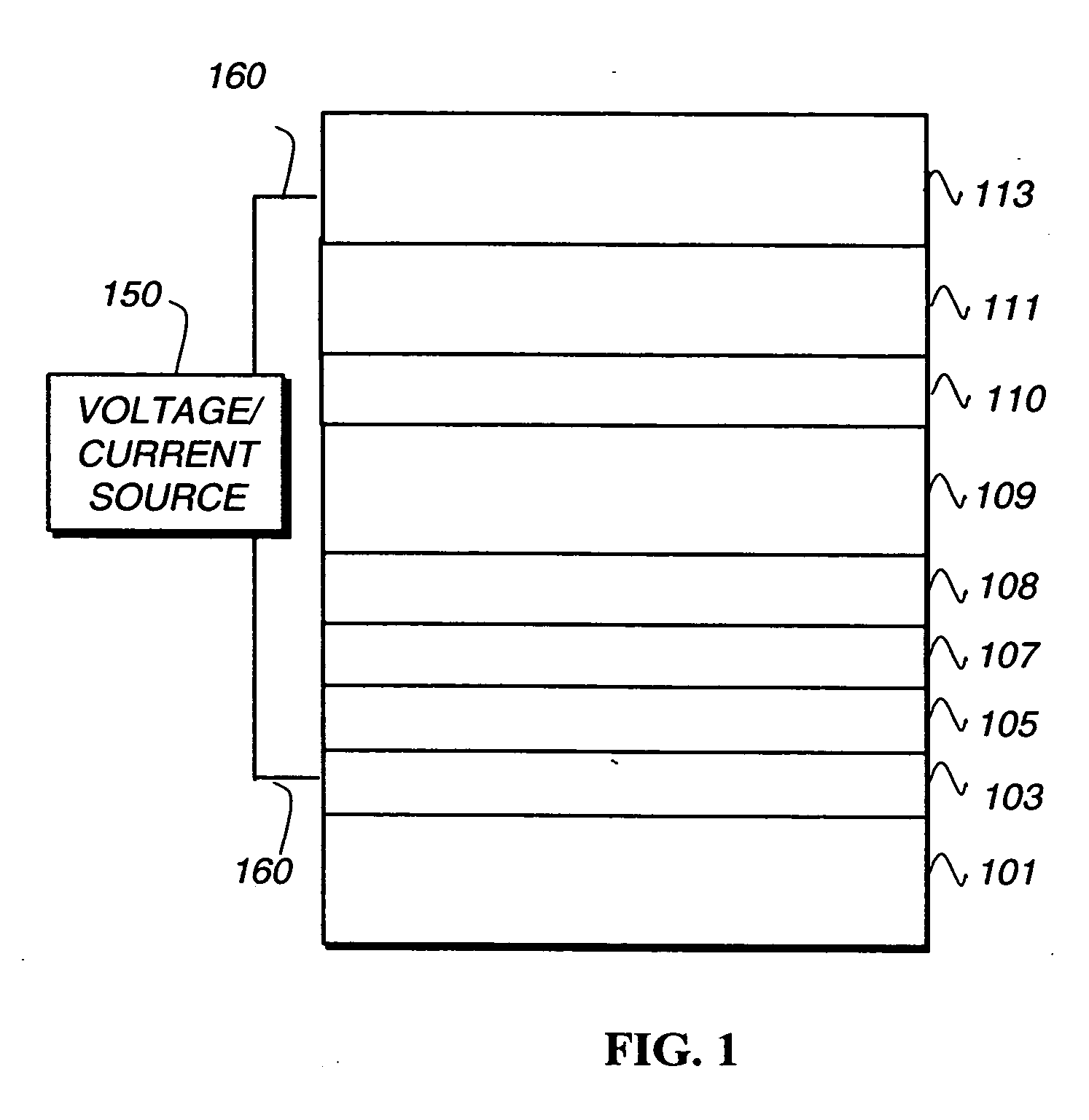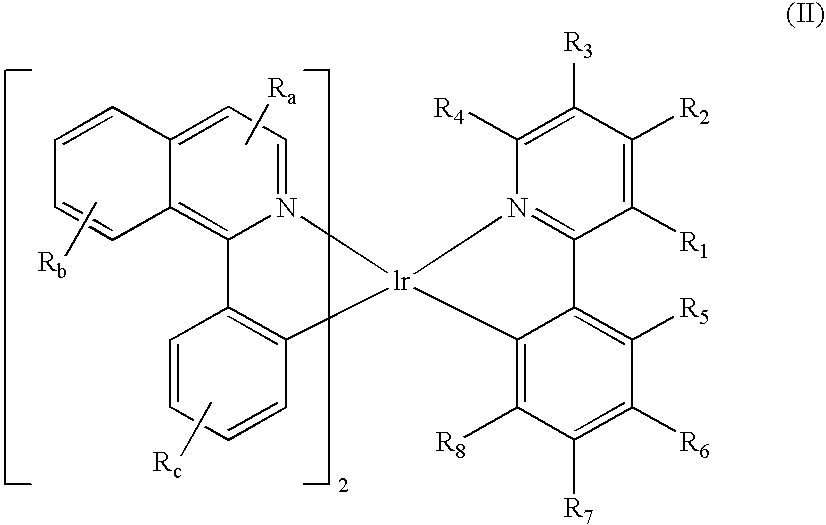OLEDs with mixed-ligand cyclometallated complexes
a technology of cyclometallic complexes and mixed ligands, which is applied in the direction of indium organic compounds, discharge tube luminescnet screens, natural mineral layered products, etc., can solve the problems of large loss of efficiency, material degradation, and performance limitations that are a barrier to many desirable applications, and achieve low sublimation temperature, easy manufacturing, and operation stability.
- Summary
- Abstract
- Description
- Claims
- Application Information
AI Technical Summary
Benefits of technology
Problems solved by technology
Method used
Image
Examples
examples
[0156]
[0157] Synthesis of meridional tris-cyclometallated iridium complex, mer-(piq)2Ir(ppy): A solution of 2-(2-bromophenyl)pyridine (1.8 g, 7.5 mmol) in anhydrous THF (30 mL, Aldrich) was cooled to −78° C. with a dry ice-acetone bath. To this solution was added dropwise a solution of n-BuLi in hexanes (5.2 mL, 1.6 M, 8.3 mmol, Aldrich). The mixture was stirred at −78° C. for 30 min and a solution of ZnCl2 in ether (7.5 mL, 1.0 M, 7.5 mmol, Aldrich) was added slowly via a syringe. The cooling bath was removed and the reaction mixture was warmed to about room temperature. The bromide-bridged dimer [Ir(piq)2Br]2 (2.03 g, 1.5 mmol) was added to the reaction mixture in one portion. Anhydrous dichloromethane (30 mL) was added and the mixture was then brought to reflux. After the mixture was refluxed for 6 hours, any remaining organozinc reagent was quenched with 5 mL of methanol. The mixture was poured into water (200 mL) and extracted with dichloromethane (3×100 mL). The combined organ...
PUM
| Property | Measurement | Unit |
|---|---|---|
| Fraction | aaaaa | aaaaa |
| Fraction | aaaaa | aaaaa |
| Nanoscale particle size | aaaaa | aaaaa |
Abstract
Description
Claims
Application Information
 Login to View More
Login to View More - R&D
- Intellectual Property
- Life Sciences
- Materials
- Tech Scout
- Unparalleled Data Quality
- Higher Quality Content
- 60% Fewer Hallucinations
Browse by: Latest US Patents, China's latest patents, Technical Efficacy Thesaurus, Application Domain, Technology Topic, Popular Technical Reports.
© 2025 PatSnap. All rights reserved.Legal|Privacy policy|Modern Slavery Act Transparency Statement|Sitemap|About US| Contact US: help@patsnap.com



